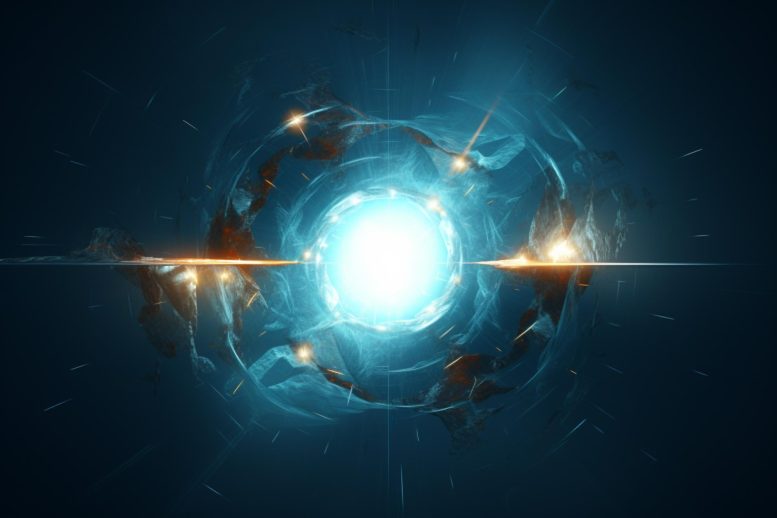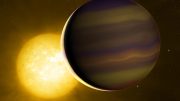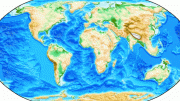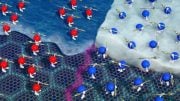
International scientists discovered that magnetostriction significantly influences muon localization in certain materials, overturning previous assumptions in muon spectroscopy. This breakthrough, achieved through advanced simulations, sheds light on the magnetic phase transitions in manganese oxide and has implications for studying similar materials.
Muon spectroscopy serves as a crucial experimental method for exploring the magnetic characteristics of materials. This technique involves embedding a spin-polarized muon within the crystal lattice and observing the impact of the surrounding environment on its behavior. It operates on the principle that the muon will settle into a specific location predominantly influenced by electrostatic forces, a position that can be pinpointed through the calculation of the material’s electronic structure.
But a new study led by scientists in Italy, Switzerland, UK, and Germany has found that, at least for some materials, that is not the end of the story: the muon site can change due to a well-known but previously neglected effect, magnetostriction.
Pietro Bonfà from the University of Parma, lead author of the study just published in Physical Review Letters, explains that his group and their colleagues at the University of Oxford (UK) have been using density-functional theory (DFT) simulations for at least a decade to find muon sites.
“We started with tricky cases, such as europium oxide and manganese oxide, and in both cases, we could not find a reasonable way to reconcile DFT predictions and the experiments,” he says. “We then tested simpler systems and we had many successful predictions, but those two cases were really bothering us. These compounds should be easy but instead turned out to be super complicated and we did not understand what was happening. Manganese oxide is a textbook case of an antiferromagnetic system, and we could not explain muon spectroscopy results for it, which was a bit embarrassing.”
The problem, he explains, was the contradiction between the expectation to find the muon in a high symmetry position, and its well-known tendency to make bonds with oxygen atoms. The antiferromagnetic order of the material reduces the symmetry, and the position close to the oxygen atoms becomes incompatible with experiments.
Challenges and Solutions in DFT Simulations
Bonfà suspected that the explanation could be linked to the material undergoing a magnetic phase transition and started trying to reproduce the phenomenon in simulations of manganese oxide. “Because it is a complicated system, you must add some corrections to DFT, such as the Hubbard U parameter,” he says. “But we were choosing its value empirically, and when you do that, you have a lot of uncertainty, and the results can change dramatically depending on the value you choose.”
Still, Bonfà’s initial simulations suggested that the muon positions could be driven by magnetostriction, a phenomenon that causes a material to change its shape and dimensions during magnetization. To prove it beyond doubt, he teamed up with the MARVEL laboratories at EPFL and PSI of Nicola Marzari and Giovanni Pizzi.
“We used a state-of-the-art method called DFT+U+V, which was very important to make simulations more accurate,” explains Iurii Timrov, a scientist in the Laboratory for Materials Simulations at PSI and co-author of the study. This method can be used with onsite U and intersite V Hubbard parameters that are computed from first principles instead of being chosen empirically, thanks to the use of density-functional perturbation theory for DFT+U+V that was developed within MARVEL and implemented in the Quantum ESPRESSO package. “Although we had already figured out that magnetostriction was at play, having the correct information on the building blocks of the simulation was very important, and that came from Iurii’s work,” adds Bonfà.
In the end, the solution of the puzzle was relatively simple: magnetostriction, which is the interplay between magnetic and elastic degrees of freedom in the material, causes a magnetic phase transition in MnO at 118K, at which the muon site switches. Above that temperature, the muon becomes delocalized around a network of equivalent sites – which explains the unusual behavior observed in experiments at high temperatures.
The scientists expect that the same may be true also for many other rocksalt-structured magnetic oxides. In the future, Timrov explains, the group wants to keep studying the same material also including temperature effects, using another advanced technique developed in MARVEL and called stochastic self-consistent harmonic approximation. In addition, and in collaboration with Giovanni Pizzi’s group at the Paul Scherrer Institute, this approach will be made available to the community through the AiiDAlab interface, so that all experimentalists can use it for their own studies.
Reference: “Magnetostriction-Driven Muon Localization in an Antiferromagnetic Oxide” by Pietro Bonfà, Ifeanyi John Onuorah, Franz Lang, Iurii Timrov, Lorenzo Monacelli, Chennan Wang, Xiao Sun, Oleg Petracic, Giovanni Pizzi, Nicola Marzari, Stephen J. Blundell and Roberto De Renzi, 24 January 2024, Physical Review Letters.
DOI: 10.1103/PhysRevLett.132.046701
The study was funded by the Swiss National Science Foundation.









Please answer:
1. What is the difference between elementary particles and microscopic particles?
2. Is current particle theory scientific?
3. Are so-called academic journals (such as Physical Review Letters, Nature, Science, etc.) scientific and honest?
4. Why is the following statement opposed and hated by some people and so-called academic journals?
and so on.
Today, we have already entered the era of the internet. With the help of artificial intelligence and big data, discussions on scientific knowledge have become open and transparent. However, a group of editors of so-called academic journals (such as Physical Review Letters, Nature, Science, etc.) are mystifying themselves. They only care about their own so-called sufficiently high priority rating, general significance, discipline, novelty, etc., and do not care about what science and pseudoscience are.
Science and pseudoscience are not determined by a publication, an organization or a person, nor by you or me, but by mathematics the final say. Physical models must be based on mathematics or mathematical models in order to be scientific, convincing, and in accordance with natural laws.
The branch of mathematics known as topology has become a cornerstone of modern physics. The perpetually swirling topological vortices defy traditional physics’ expectations. A physical properties of topological vortices is their to spontaneously begin to change periodically in time, even though the system does not experience corresponding periodic interference. Therefore, in the interaction of topological vortices, time is both absolute and relative,and physics often requires treating space and time at the same level.
Low-dimensional spacetime matter is the foundation of high-dimensional spacetime matter. Low-dimensional spacetime matter (such as topological vortex) can form new material structures and derive more complex physical properties via interactions and self-organization. It is extremely wrong and irresponsible to imagine low dimensional spacetime matter using high-dimensional spacetime matter.
Science must follow mathematical rules. For example, the Standard Model (SM) is considered to be one of the most significant achievements of physics in the 20th century. However, the magnetic moment of μ particle is larger than expected, revealed by a g-2 experiment at Fermilab, suggests that the established theory (such as SM) of fundamental particles is incomplete. Furthermore, the SM omitting gravitation, it not involved the time problem and when the particle movement starts. Mathematics is the foundation of science. Physics must respect the scientific nature of mathematics and mathematical models. The SM must be based on mathematical models in order to be scientific, convincing, and in line with natural laws.
I hope researchers are not fooled by the pseudoscientific theories of the Physical Review Letters (PRL), and hope more people dare to stand up and fight against rampant pseudoscience.
The so-called academic journals (such as Physical Review Letters, Nature, Science, etc.) firmly believe that two high-dimensional spacetime objects (such as two sets of cobalt-60) rotating in opposite directions can be transformed into two objects that mirror each other, is a typical case of pseudoscience rampant.
If researchers are really interested in Science and Physics, you can browse https://zhuanlan.zhihu.com/p/643404671 and https://zhuanlan.zhihu.com/p/595280873.
The interaction and balance of topological vortices not only demonstrate the beauty of mathematics but also change the way humanity understands nature. Studying topological vortices can significantly expand the boundaries of human cognition. To understand this complex world, physics should respect the authenticity of topological vortex gravitational fields in low dimensional spacetime, rather than simply relying on a few formulas, numbers, or imagined particles.